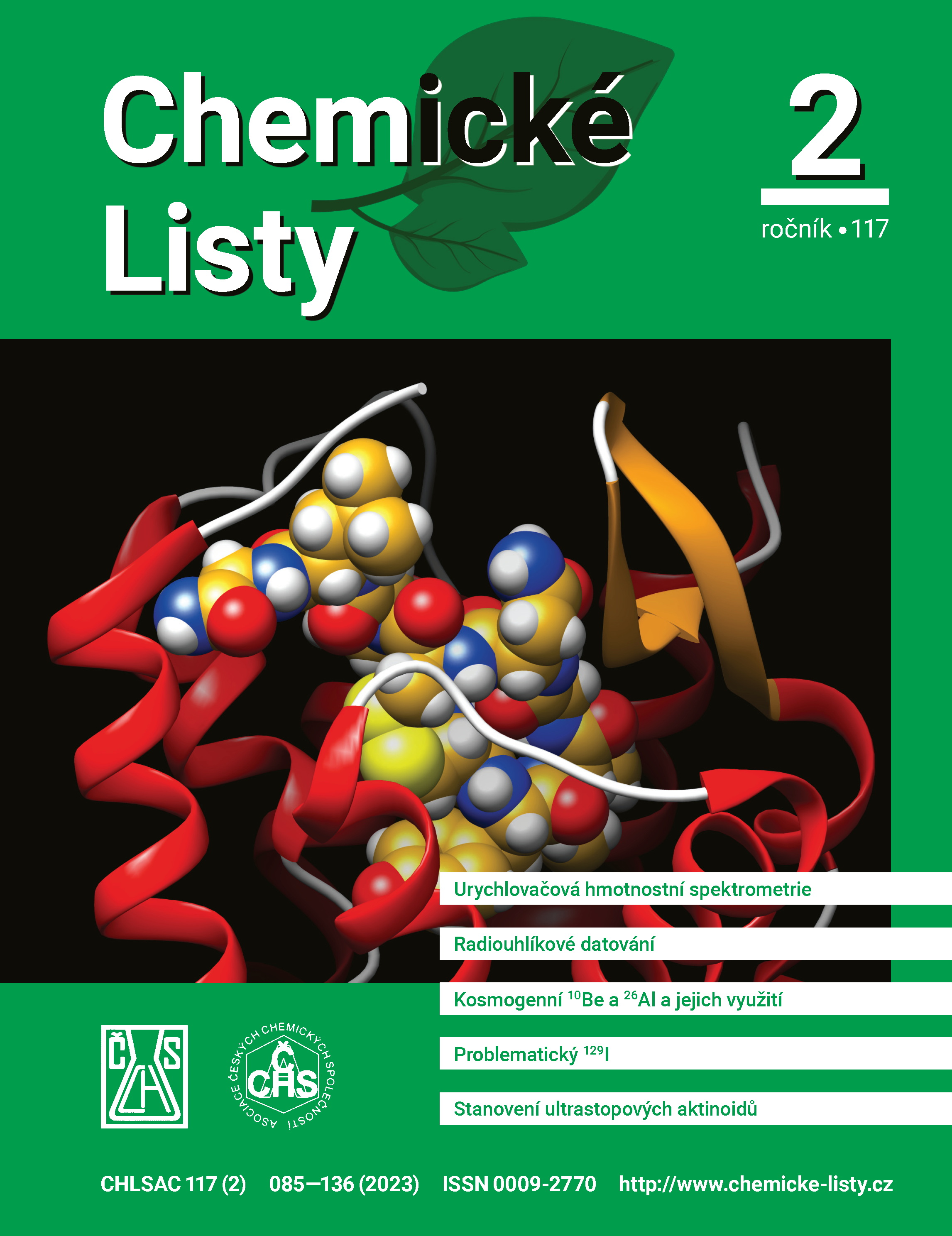Principles and Applications of Accelerator Mass Spectrometry
DOI:
https://doi.org/10.54779/chl20230086Keywords:
accelerator mass spectrometry, ultratrace analysis, dating, ¹⁴C, ¹⁰Be, ²⁶Al, ¹²⁹I, ²³⁶UAbstract
Accelerator mass spectrometry (AMS) represents an ultrasensitive analytical method for measurement of long-lived radionuclides, namely 14C, 10Be, 26Al, 41Ca, 129I, and 236U. It provides information about isotopic ratios up to 10–16 in samples of mass from several miligrams to tens of micrograms. The first AMS laboratory in the Czech Republic was built in Nuclear Physics Institute, Řež, in collaboration with Archaeological Institute, Prague (both Czech Academy of Sciences) and Faculty of Nuclear Sciences and Physical Engineering, Czech Technical University in Prague, and equipped with AMS MIELA (Ionplus AG, Switzerland). This review summarizes history, principles, and use of this unique analytical method.





